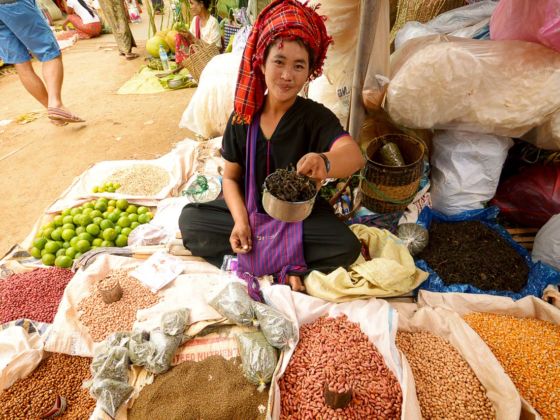Solo travel has taught me about various cultures, people, and myself. It’s made me realize my capabilities and limits, and that people are innately kind, sometimes just misunderstood. I’ve gained many new friends along the way, most with interesting stories. It’s when I’m alone that the human need to connect comes out. Solo travel has taught me to be more open and spontaneous.
My favorite subjects to shoot are people and places. I walk a lot and sit and watch, and because I’m alone my schedule is completely flexible. It’s by traveling slowly that I get to interact with people in candid, more honest situations.
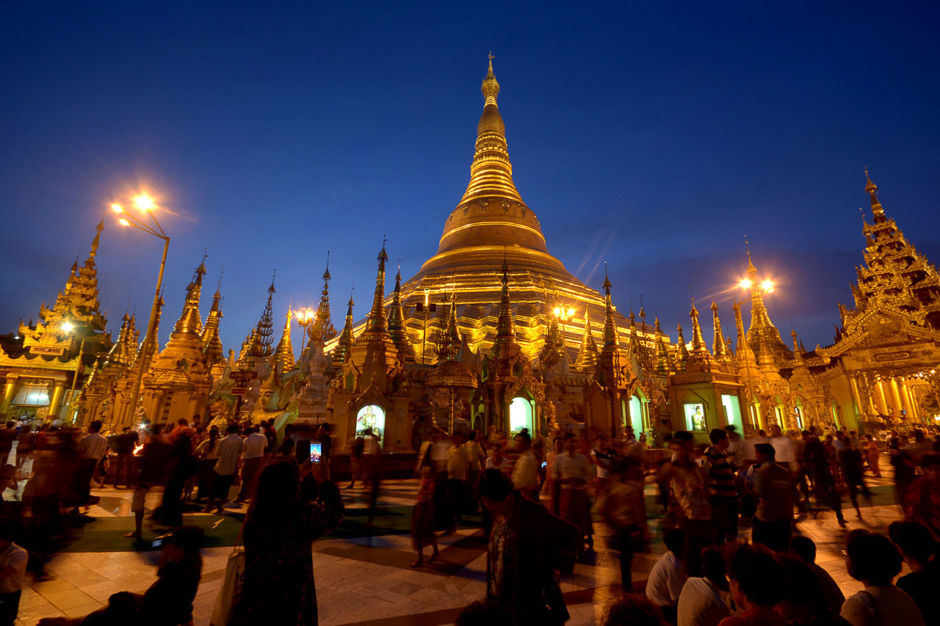
Shwedagon Pagoda
Shwedagon Pagoda, which is believed to contain relics of four enlightened Buddhas, is in Yangon. At 99 meters, the tip of the gold-plated stupa is designed with thousands of hanging diamonds, rubies, and sapphires. The complex is huge with numerous satellite temples and Buddha statues. Just before sunset, I was surprised as volunteer sweepers lined up in two rows to clean around the stupa. At dusk, Shwedagon gleamed at its brightest, its light undisturbed against the dark blue sky amidst the busy shadows of people.
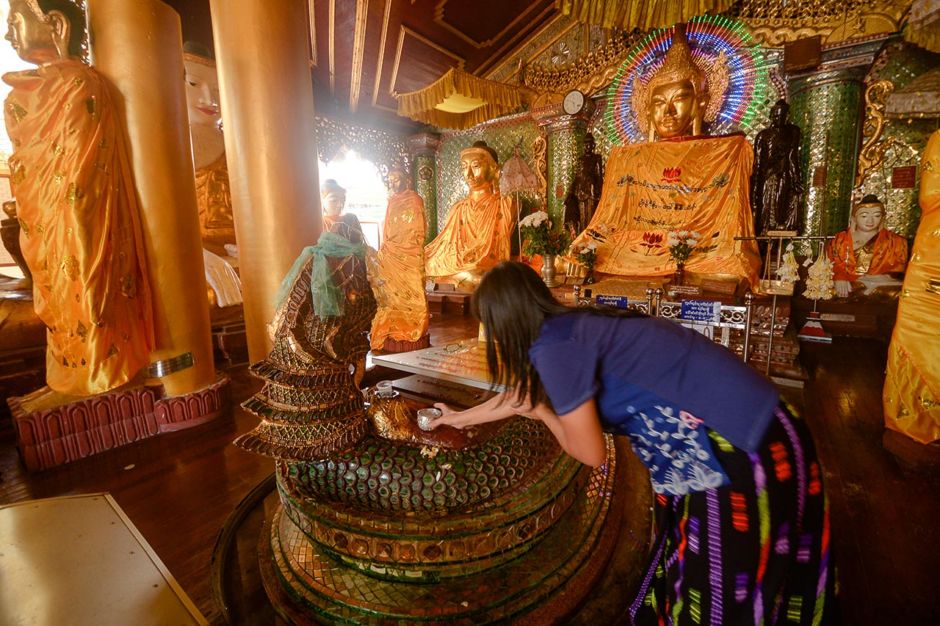
Interesting religious practices
Myanmar has quite a few interesting religious practices which I've never seen in other temples. In this picture, a lady reached for a cup of water and poured it on the mosaic-covered animal statue in front of a seated Buddha (and sometimes poured on the Buddha statue itself) which signifies good luck and good karma. In the background, the main Buddha appeared with lights of red, green, and blue emanating from its head, which is sometimes animated.
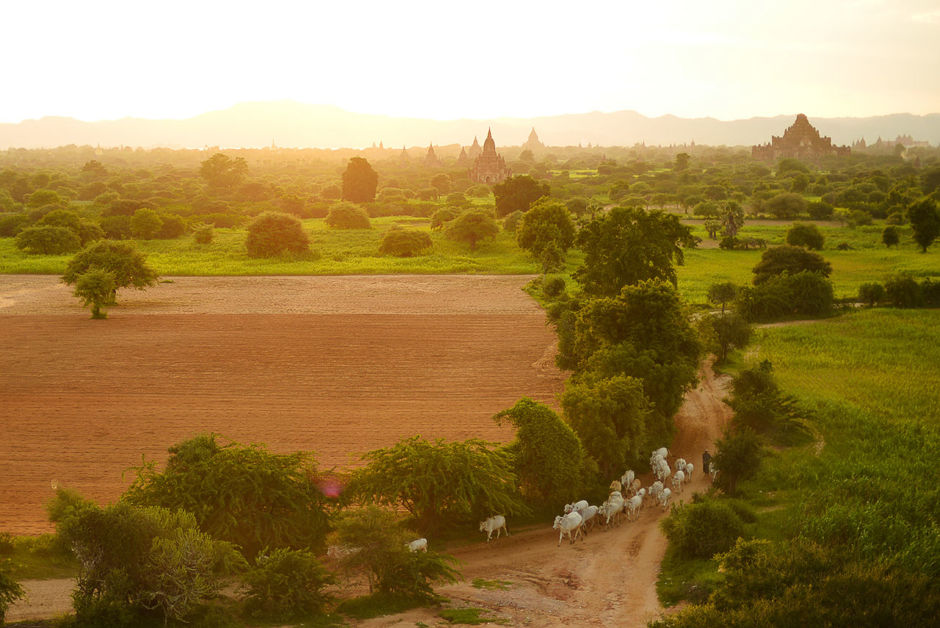
View from Pyathaya Pagoda
Probably the most famous town in Burma is Bagan. Divided into Old and New Bagan, it's most famous for its 11 AD ancient temples, and stunning sunset and sunrise view of these 3000 temples scattered in luscious forests and grasslands. This view was from the top of Pyathaya Pagoda and it offered a good spot with lesser tourists and more space. The sun touched the tips of the temples, their silhouettes of triangular forms became more prominent, their varying sizes and distances gave a stunning gradation of hues of orange. Everything else in the horizon appeared soft.
Intermission
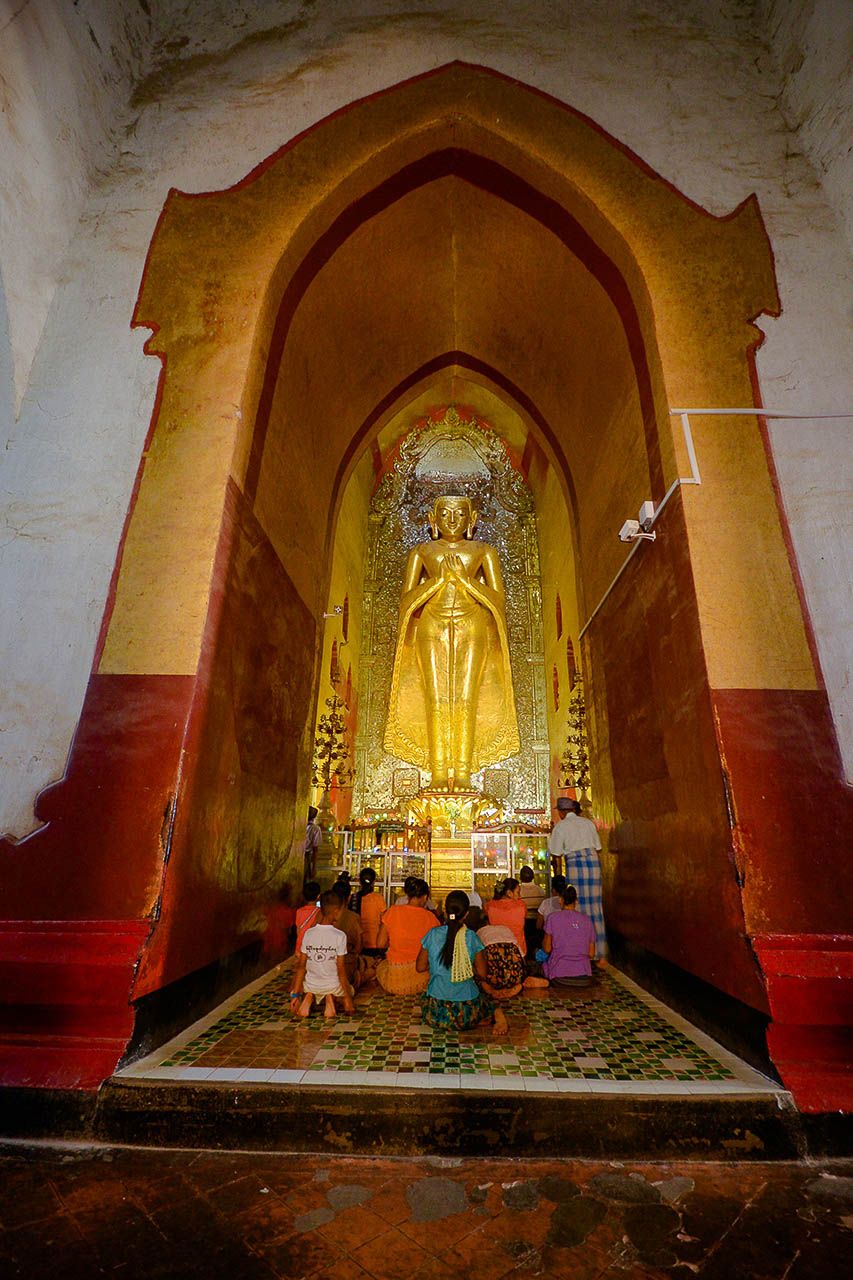
Kakusanda Buddha
Considered the "grace" of Bagan, the Ananda Temple houses four standing Buddhas, the tallest and the most sophisticated I've seen in Bagan. Reaching up to the ceiling, these gold-colored Buddhas were carved in a shapely manner rather than angular. Here, the Kakusanda Buddha had a wall mosaic of intricate vine patterns made of glass which shimmered like diamonds inside a dusty old treasure chest. Devotees pay their reverence by kneeling and bending their heads to the floor, a common sight at every Buddha statue.
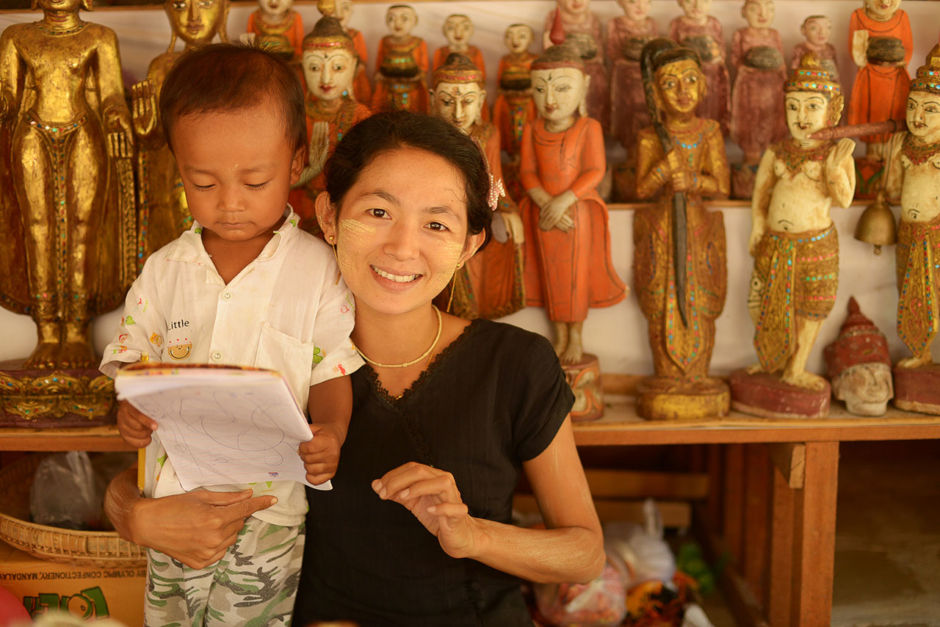
Thanaka 'makeup'
A mom smiled holding her “busy” son with wooden statues of deities and Buddhas in the background. These souvenirs are sold at the entrances of a few famous temples in Bagan. The flesh-colored smear-like paint on her cheeks is called Thanaka 'makeup', a popular and effective sunscreen (also considered beautiful) for girls made from the bark of Thanaka tree. I tried it, and it was more effective than the chemically produced sunscreens.
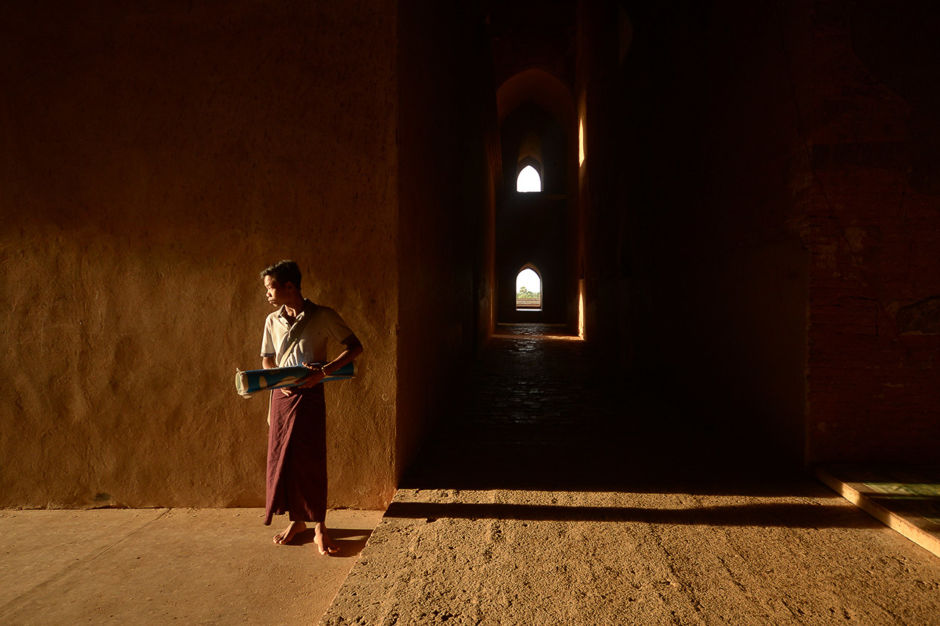
Sunrise in Bagan
A morning visit to the temples. We watched the sunrise in Bagan and headed to nearby temples afterward. Temples in Bagan are dim but the light from the sun is always interesting. Here, a boy who had probably just finished worship holds a rolled-up mat and looks at the day ahead.
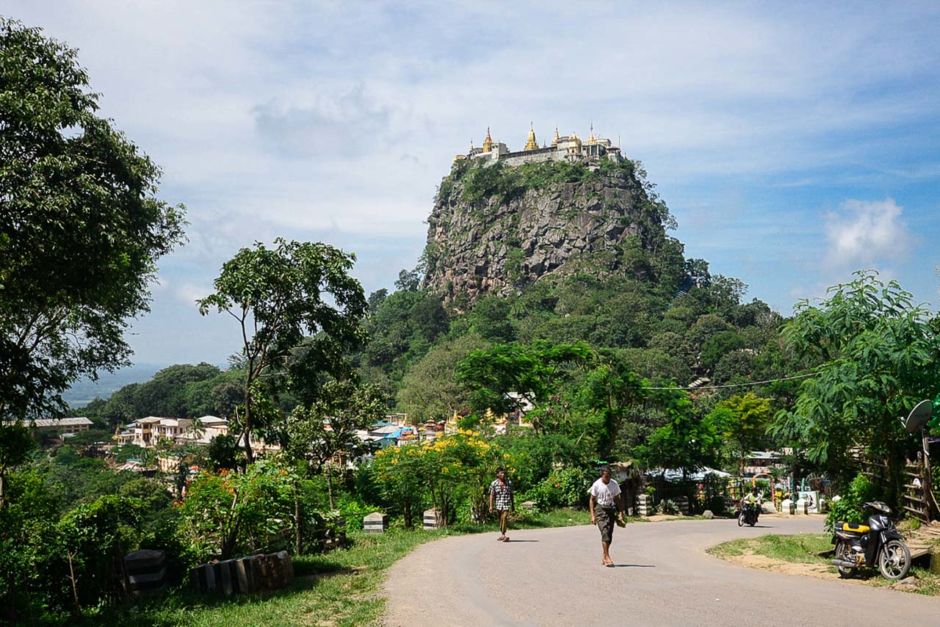
Mt. Popa
Close to Bagan is Mt. Popa, a 1518-meter volcanic rock on top of which sits a white monastery with gold stupa. From afar, it looked rectangular and cut like a cliff, and appeared similar to Sigiriya Rock in Sri Lanka. Climbing to the top was made convenient by the roofed staircase, but the numerous souvenir stalls on the way up made the vibe very touristy. The monastery was not much of a beauty, but the 360° view of the lush forest from the top was the highlight of the day -- so were the menacing monkeys playing on the stairs.
Intermission
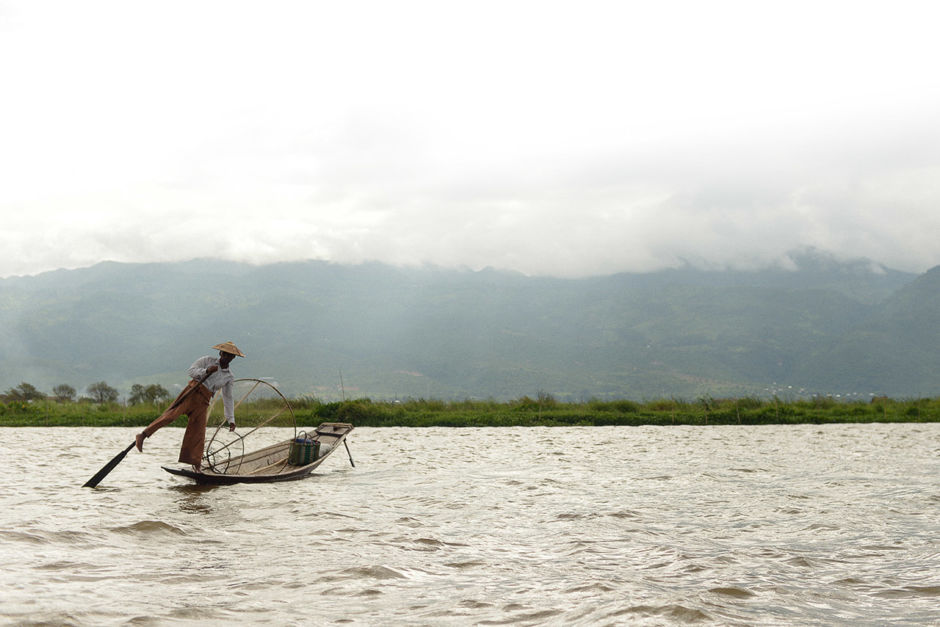
Fisherman on Inle Lake
Another "must-see" for cultural education is Inle Lake. Stretching 11 miles, the lake is made of Intha villages composed of stilt houses. As we traversed from one village to another, we witnessed the unique way of local fishing: Fishermen stood at the edge of the boat on one foot, the other directed the paddle as one hand supported it, and the other hand held the bell-shaped bamboo net.

Market at Inle Lake
The village markets at Inle Lake sold various products like parasols, weaved materials from lotus plant, silver wares and rice wines. We took the lake tour for a whole day, which took us to the vibrant market where Pao people, in traditional red turbans and black tops, were selling cabbages, dried fish, beans and tea leaves -- among other items -- weighing them manually by balancing two rusty saucers tied by a string. This woman was putting tea leaves in a container when I approached and, as she probably noticed me taking photographs of her neighbors, she proudly held out her tea leaves to the camera.
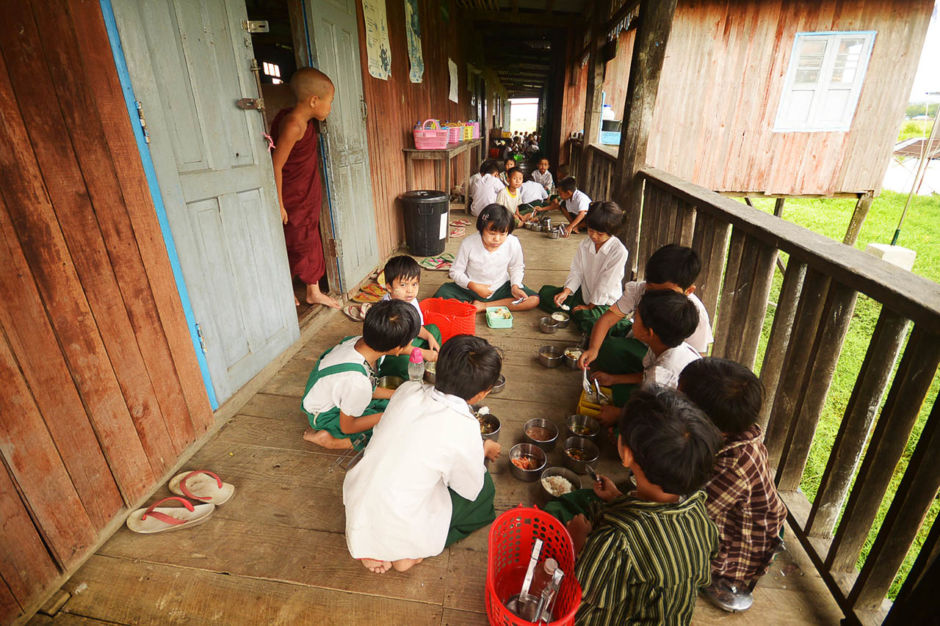
School lunch
Further south on the lake, we visited a matchstick-like school beside a monastery for novice monks. Childhood memories filled me as we watched a kid reciting in front of the class, and kids with their tin lunchboxes hurriedly gathered at the terrace and ate together. It was heartwarming, the highlight of the lake tour for me. I would have joined them if I had brought lunch with me!
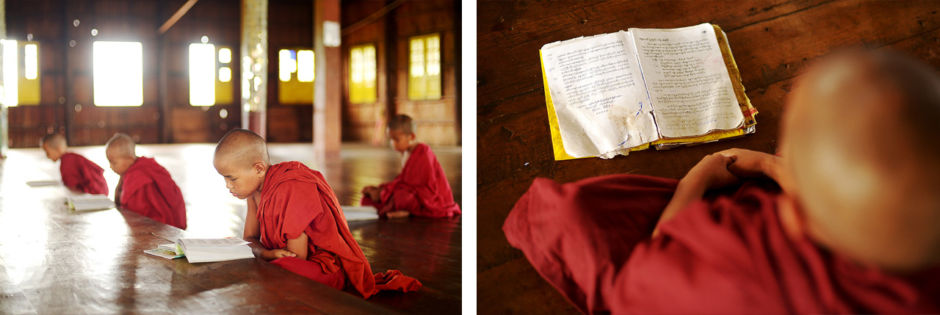
Back to school
After their lunch, we went to the wooden monastery where novice monks resumed classes. The kids referred to their books, some already worn out, and the room was filled with soft chanting.
Intermission
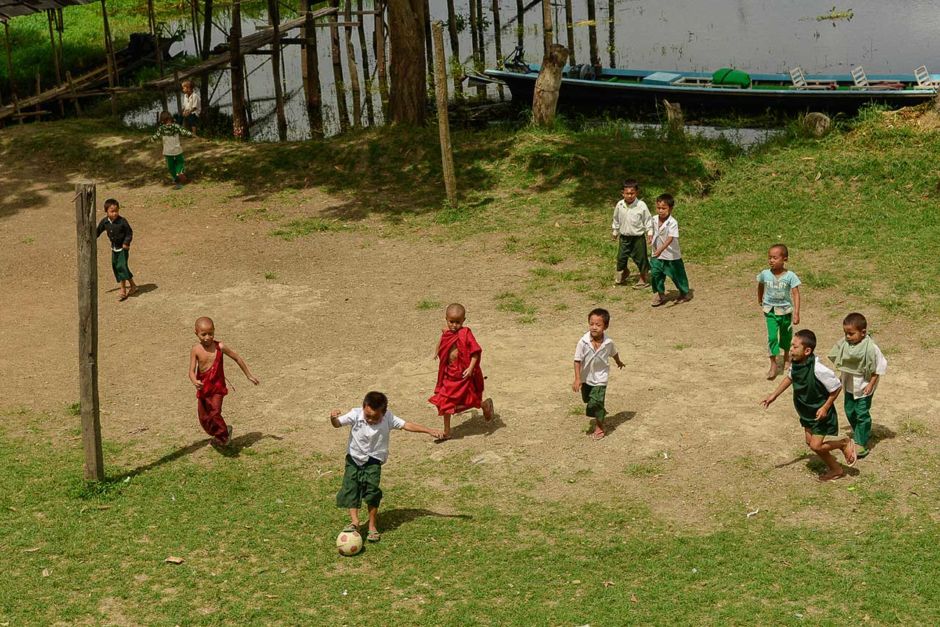
Kids playing soccer
Outside the monastery, the kids and the novices were playing soccer. Hearing the chanting while watching this simple slice of life was peacefully enjoyable. We were the only visitors.
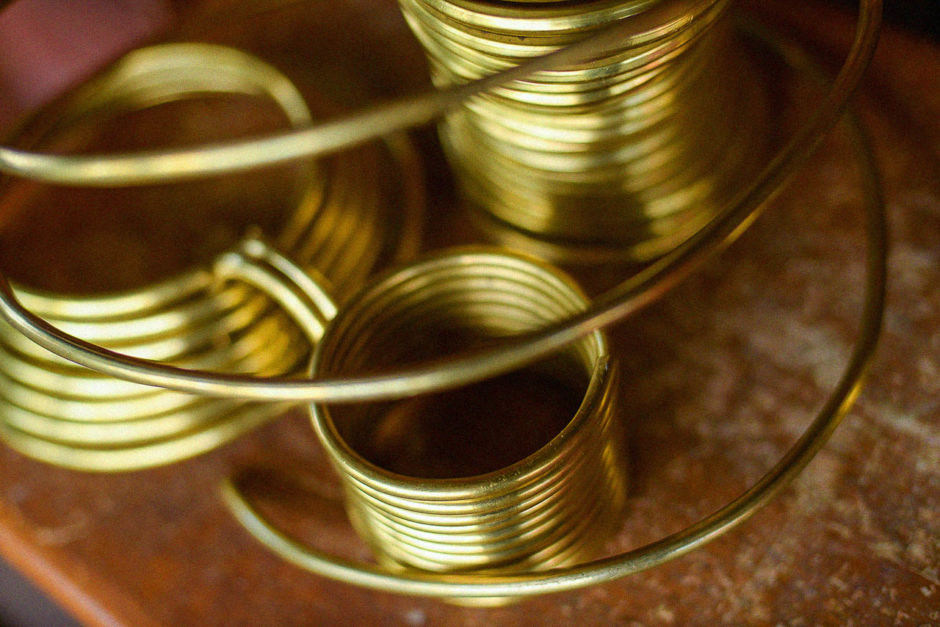
Gold neck coils
One particular village at Inle was unpleasantly memorable because of the controversial ‘human zoo’ practice of using long neck ladies from the Karen tribe for photo ops in the souvenir shop. Their necks wrapped with layers of thick gold coils were a unique beauty, but using them for attraction isn’t empowering. There were three Karen ladies on standby, and one of them instantly went for a scripted weaving activity when we arrived. These are the gold coils used by the ladies on display.
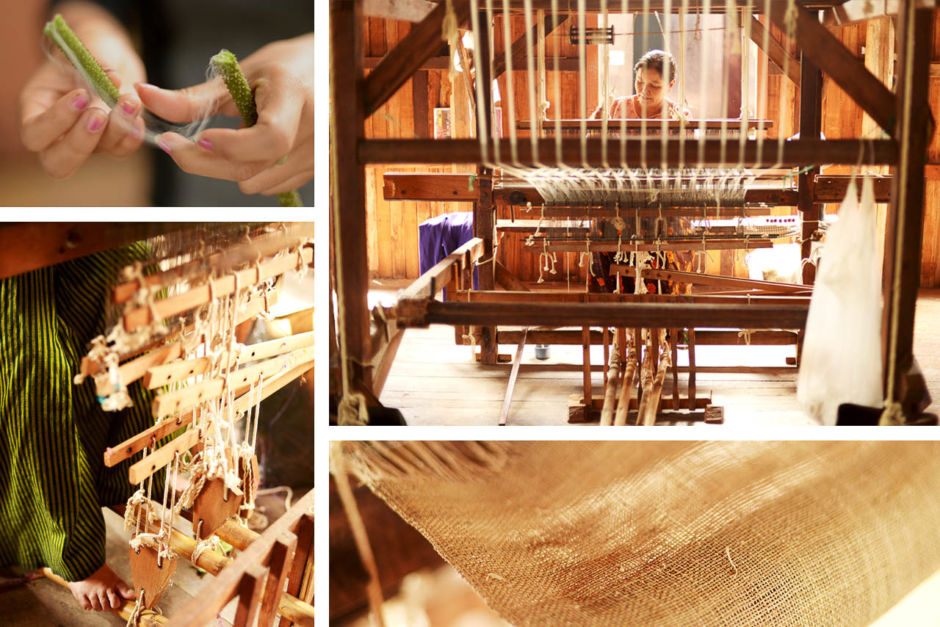
Lotus scarf making
Never have I heard of a scarf made 100% from lotus stems which, when broken, releases fibrous material. We went into a room full of weavers, watched as their hands and feet moved so fast that the clacks of wood and bamboo they used was like a symphony. The final product, the lotus scarf, looked rustic and beautiful in its natural light brown color.
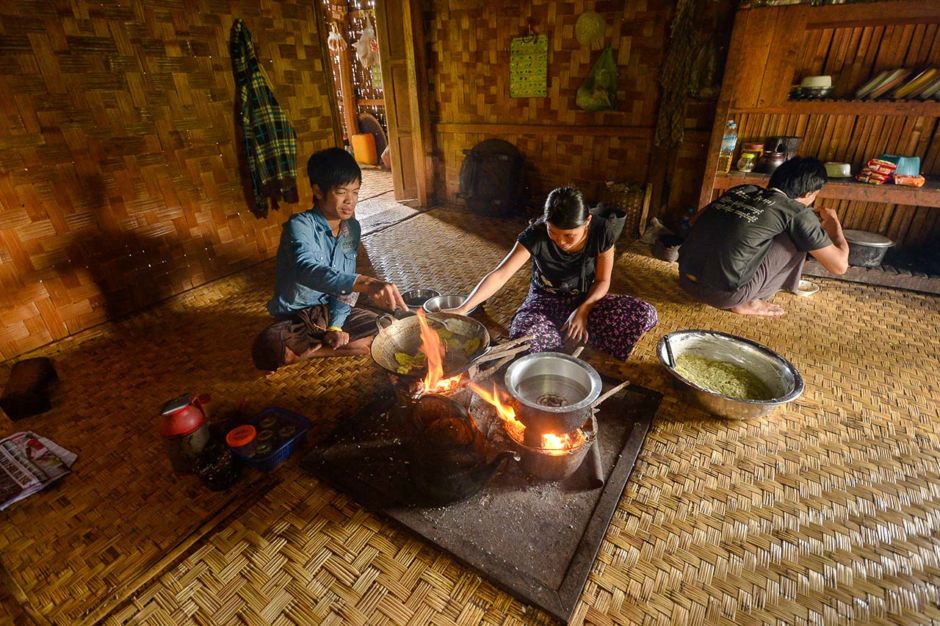
Local hospitality
After the educational boat tour on the lake, we trekked for 20km in the mountains of Kalaw using a GPS. We had not planned where to have lunch when we passed by a big house where a grandmother was outside. Most people don’t speak English in this part of the town so I mimicked eating, hands to my mouth, and touched my tummy. She seemed to understand, smiled at me, and pointed up to her house. They cooked noodles with leafy vegetables for us and sipping the hot soup with tea was very satisfying. We were recharged.
